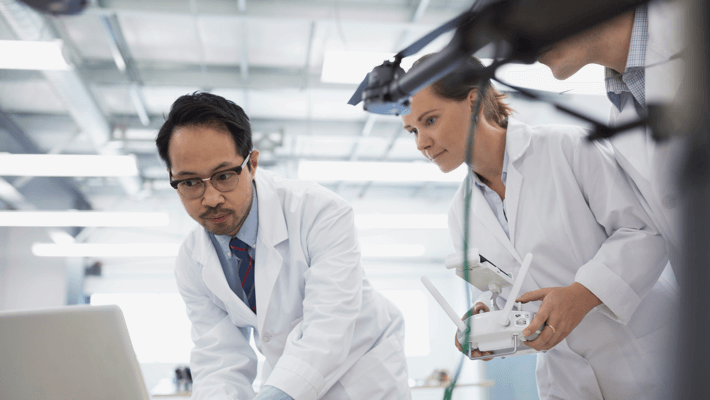Content management error: Header Banners should not be placed in the Navigation placeholder!
Naval, Rail, Infrastructure & Transportation
Trains and ships haven’t changed significantly in decades.
Content management error: Generic Content Banners should not be placed in the Navigation placeholder!
Incremental changes have certainly improved comfort, speed, efficiency and reliability but those who were born in the 1980s are using essentially the same equipment.
It’s an area ripe for disruption.
Electrifying advances are coming. These advances will have wide-ranging and unpredictable impacts. But we can reasonably conclude that we’ll see more driverless and pilotless road, rail and sea-going transportation, real-time monitoring of truck, train and ship movements and the massive changes to infrastructure required to implement these changes to transportation networks.
We see three trends underpinning this seismic shift:
Content management error: Generic Content Banners should not be placed in the Navigation placeholder!
1. Automating everything
There is usually one weak link common across all transportation means: the person in control of the vehicle. They get tired. They get hungry. They get distracted. Even the best truck drivers, train drivers and pilots in the world have bad days. Artificially Intelligent software doesn’t. It makes sense that these networks embrace automation for greater operational efficiency, minimizing risks to passengers and goods and reducing costs.
People usually think about cars when it comes to autonomous vehicles. But the first fully autonomous cargo ship is scheduled for operation by 2020. Western Australia has already blazed a trail with the first autonomous, heavy-haul rail network. The implications for the industry as a whole are awe-inspiring.
Our manufacturing engineering and IT Data Center Support services can work together with your business to assess the ways data and analytics can be harnessed for automation. From design and prototype to planning and operating the network services you require, we can find the right solution for you.
Content management error: Generic Content Banners should not be placed in the Navigation placeholder!
2. Laying the track
Various new rail systems are being imagined from autonomous personal transportation pods to the Hyperloop.
How will governments invest in creating the new tracks, over and underground, and adapt to allow for these new rail paradigms? It is significantly more difficult to lay new tracks in developed countries, so it is likely that the biggest changes will happen at scale and speed in developing countries.
Modis has a global network of close to 30,000 colleagues with cross-domain expertise in manufacturing engineering and IT services. Our colleagues can mobilise rapidly to help your business approach the design, testing and roll-out of infrastructure projects.
Content management error: Generic Content Banners should not be placed in the Navigation placeholder!
3. The green road

There is an increasing thrust towards greener transport. Whether that’s continued development of battery-powered trucks or electrified rail and magnetic levitation, manufacturers and operators will have to deal with increased demand for power over the network.
They will need to integrate the planning and operation of generation and networks; and work out how to feed excess capacity back into the grid. Solar-powered and zero-emissions ships will become standard. Alongside this is the need to think about how the infrastructure itself becomes greener, like roads with inbuilt pressure plates that return energy to the grid or power roadside services and signage.
Our services include tailoring environmentally-friendly solutions to meet your transportation needs at our Centers of Excellence or Delivery Centers. Here you can outsource entire projects or processes with the work carried out onshore, nearshore or offshore, always to the highest standards.
Innovating together in Naval, Rail, Infrastructure & Transportation
We have the capabilities to partner with you across projects in this industry; from designing vehicles and telematics systems to improving the manufacturing and supply chain, developing power grids and providing vehicles between machines and back-end systems.
- Electrical and electronic systems: Telematics, Infotainment, Security, Embedded software, Connectivity
- Chassis and suspension systems
- Powertrain environment (engine and gearbox)
- Manufacturing & Supply-chain
- Quality and Project Management
- IT operations
- Hardware design and prototyping
- Application Support
- Data Center & Network Support
- Project Management
- Agile/SCRUM
Content management error: Generic Content Banners should not be placed in the Navigation placeholder!